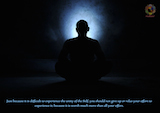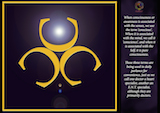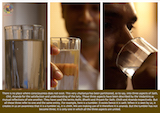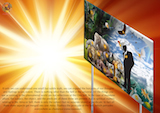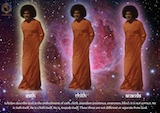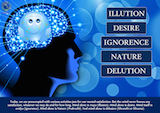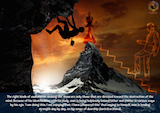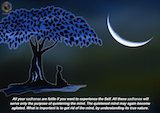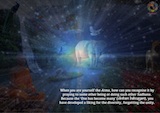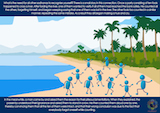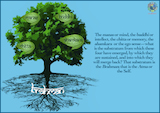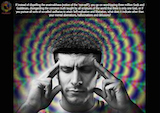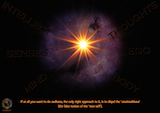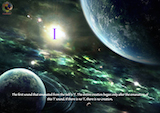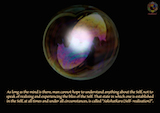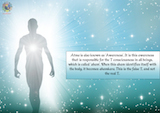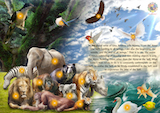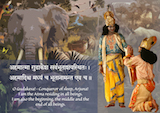|
|
| 'Like' us on Facebook | Follow us: |
Posted on: Sep 10, 2015
SUMMER SHOWERS 1990 ILLUSTRATED (Part 10)
SSI - 11.09.2015 |
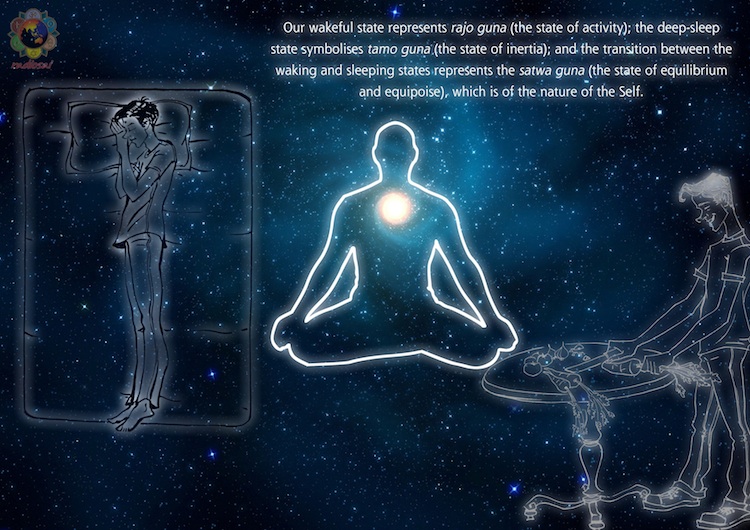 |
Bhagawan would often say, “My life is My Message.” A simple understanding of this declaration is that He lives every day the message He teaches. One other meaning one could draw is that, ‘His message is His life’! That is, the message that Bhagawan gave is the very life essence of His descent as an Avatar. And the fact that even today, we can go through the thousands of discourses He delivered is in itself a sign of His benediction upon us.
And among the discourses Baba delivered, those that He gave as part of the Summer Course series are even more special. This is because often these are a set of discourses centered around a specific theme, elaborated gradually. These are a treasure mine for any sincere spiritual seeker. So in our attempt to encourage more people to dwell deeply into these divine discourses, and contemplate on the message therein, we begin with prayers, a new series today.
In March 2013, with the same motive in mind we began a radio series entitled Shravanam Mananam Nididhyasanam. In this live show we began going through the 1990 Summer Course discourses, and needless to say we were overwhelmed by their profundity. So we now wish to offer these discourses to our readers, in this new format. We will try to pictorially depict the messages in these discourses in the form of a poster. These will be sent everyday to all our Sai Inspires subscribers as a link along with the Thought for the Day (If you are not a subscriber yet, please do subscribe). And after these posters are dispatched, they will be added to this page, on the right hand side. You can view, download and even print and use them if you so wish. Also given below is an abridged version of the discourse as published in the Summer Showers 1990 book.
We pray to Bhagawan to bless and guide this new endeavour of ours. And we invite you all to partake of and imbibe our Master’s ethereal message.
KNOW THYSELF O Gudakesa!—Conqueror of sleep, Arjuna! Embodiments of Divine Love! In the above verse of Gita, Krishna tells Arjuna, “I am the Atma (the Self) residing in all beings; I am also the beginning, the middle, and the end of all beings.” That is to say, the entire Cosmos consisting of moving and non-moving objects is only the Atma. Nothing exists other than the Atma or the Self. What today’s man needs to do is to constantly contemplate on the Self, to realise the Self, to be firmly established in the Self, and to experience the bliss of the Self Atma is also known as “Awareness”. It is this awareness that is responsible for the “I” consciousness in all beings, which is called “aham”. When this aham identifies itself with the body, it becomes ahamkara. This is the false “I”, and not the real “I”. What hides the Atma always, is the mind. The clouds that are formed due to the Sun’s heat hide the Sun itself. Likewise, the mind, which is the offspring of the Atma, hides the Atma itself. As long as the mind is there, man cannot hope to understand anything about the Self, not to speak of realising and experiencing the bliss of the Self. That state in which one is established in the Self, at all times and under all circumstances, is called “Sakshatkara (Selfrealisation)”. The first sound that emanated from the Self is “I”. The entire creation began only after the emanation of this “I” sound. If there is no “I”, there is no creation. The terms “I”, Brahman, Atma, and Self are all synonymous. The “I” sans mind is the Atma, or the Self, in its pristine purity. The “I” associated with the mind is the false self or mithyatma. There is only one Atma or Self and that is the “I”. The paradox, however, is that to experience his own Reality—what he already is—man is undertaking several sadhanas (spiritual practices). All such practices undertaken for seeking the Self are activities in which man engages himself during the state of ajnana (ignorance) only. You will not find the jnani (the realised one) doing such sadhana, because for him, there is no distinction such as the means and the end. If man is practising sadhana, it is for his mental satisfaction. Such practices that are pursued for mental satisfaction will only serve the purpose of strengthening the mind instead of destroying it, as recommended in the teachings of Vedanta. If at all you want to do sadhana, the only right approach to it, is to dispel the “anatmabhava” (the false notion of the “non-self”). If, instead of doing this right thing, you go on worshipping three million Gods and Goddesses, disregarding the common truth taught by all the scriptures of the world that there is only one God, or if you pursue all sorts of so-called sadhanas to attain Self-realisation and liberation, what does it indicate other than your mental aberrations, hallucinations and delusions? It is important to recognise that as long as the mind is there, desires will not leave you. As long as you have desires, the false notion of “I” and “mine” will not leave you. As long as the feeling of “I” and “mine” is there, ahamkara (your wrong identification with the body) will not leave you. As long as ahamkara does not leave you, ajnana (ignorance) too will not leave you. In effect, it means that there is no way other than the annihilation of the mind to attain Atma jnana (knowledge of the Self), or Atma darshan (vision of the Self), or Atma ananda (bliss of the Self), whatever you may choose to call it. The mind, the buddhi or intellect, the chitta or memory, the ahamkara, or the ego sense—what is the substratum from which these four have emerged, by which they are sustained, and into which they will merge back? That substratum is the Brahman; that is the Atma or the Self. So, instead of recognising the source of your origin and your own identity, what is the use of your trying to attain it by taking recourse to other pathways? It looks as ridiculous as a thief putting on a policeman’s dress in an effort to catch the culprit i.e. himself! What is the need for all other sadhanas in order to recognise yourself? There is a small story in this connection. Once a party consisting of ten fools happened to cross a river. After fording the river, one of them wanted to verify whether all ten of them had reached the bank safely. He counted all the others, forgetting himself, and began weeping, telling them that one member of the group was lost in the river. The other fools in turn also did the same mistake by repeating the counting in a similar manner. As a result they all began making a hue and cry. In the meanwhile, a passer-by who noticed their miserable plight approached them and asked them the reason for their piteous lamentations. When they told him that one of the ten members of their group was washed away in the river while crossing, the passer-by understood their ignorance and asked them to stand in a row. Then he counted them aloud one by one, thereby convincing them that all the ten of them were intact, and that their wrong conclusion about the loss of one man was due to the fact that everybody forgot himself while counting. One who has forgotten himself cannot recognise the truth proper. When you are yourself the Atma, how can you recognise it by praying to some other being or doing such other Sadhana. Because the “One has become many” (Ekoham bahusyam), you have developed a liking for the diversity, forgetting the unity. All these things that you see around you are your own reflections, as if in a mirror. Leaving the actual object, you are running after the reflected images. Your own bhrama (delusion) is binding you hand and foot. One who is bound by bhrama cannot reach Brahman (God). All your sadhanas are futile if you want to experience the Self. All these sadhanas will serve only the purpose of quietening the mind. The quietened mind may again become agitated. What is important is to get rid of the mind, by understanding its true nature The right kinds of sadhana for seeking the Atma are only those that are directed toward the destruction of the mind. Because of his identification with his body, man is being helplessly tossed hither and thither in various ways by his ego. “I am doing this; I am enjoying that; I have conquered this” thus saying to himself, man is lending strength day by day, to his sense of doership (kartritva bhava). Students! Remember that success and failure do not depend on your efforts or sadhana and such other activities. You are simply inflating your ego (ahamkara), by deluding yourself that you have been able to achieve things by your own effort. Look around and see the many instances where the best of efforts have not been crowned with success, while with little or no effort victory has come unsought in the case of many others. Instead of getting frustrated due to failures by depending on your efforts have not been crowned with success. While with little or no effort only, you can surely win success by dedicating all your activities to the Divine, by considering them as the Lord’s work, and by undertaking them with unwavering faith in God. You should have the firm conviction that nothing happens due to human effort. Proof for this assertion need not be sought for in some far-off place. It can be found right within your own body. For instance, what effort are you making for the ceaseless beating of your heart or for the incessant breathing of your lungs? Does the digestion of the food eaten by you take place, because of your will? Are you able to live because you want to live, or die because you want to die? Does your birth take place according to when and where you desire? If you ponder deeply along these lines of thought, you will discover that your feelings of “I” and “mine” (ahamkara and mamakara) are being unduly fostered by your false sense of doership and enjoyership (kartritva and bhoktritva). Today, we are preoccupied with various activities just for our mental satisfaction. But the mind never knows any satisfaction, whatever we may do and for how long. Mind alone is maya (illusion). Mind alone is desire. Mind itself is avidya (ignorance). Mind alone is Nature (Prakruthi). And mind alone is delusion (bhranthi or bhrama). Deeply immersed in this bhrama, how can you hope to attain Brahman, without getting rid of your bhrama? Seeing your own shadow, you are trembling with fear! You are afraid of your own feelings and imaginations! However, “Reality is one” (Ekam Sath). And that is “Atma”. Scholars describe God as the embodiment of sath, chith, anandam (existence, awareness, bliss). It is not correct. He is sath itself, He is chith itself, He is Ananda itself. These three are not different or separate from God. “There is some mighty power, unknown to me, different from me and far away from me,”—thinking thus, some people resort to meditation. “There is some secret and sacred divine power distinctly separate from me and I must acquire it”—imagining thus, some others observe many vows, perform several rites and undertake various austerities. All this is sheer ignorance. As long as you think there is anything different from you, so long are you submerged in ignorance. There is nothing in the universe other than you, or higher than you. To think otherwise or to try to prove otherwise is nothing but your “Mano Bhranthi” (mental delusion), resembling a dream. In your dream you see many sights and experience various things, but for how long are they real? Only as long as your dream lasts. When the dream ends, they are all unreal. Similarly, your hardships, losses, worry and sorrow etc. are real, only as long as your mind is under delusion. Once the delusion leaves you, they will all be unreal. They will then turn out to be castles of myths created by your mind. Relying on the false “I,” you are rejecting the real “I.” You are boosting your Ahamkara by thinking continually that you are the body. If only we can understand one small but subtle truth, we can expand the horizons of our thoughts and feelings to any extent. There is nothing other than the Self in the universe. All the things you see as existing in the phenomenal world are but reflections of the One Self. In the case of mundane affairs, the subject, the object, and the predicate—all these three are present. But in spiritual matters relating to the Atma or Self, there is only the subject but no separate object or predicate. In fact all these three aspects get merged into one Atma Thathwa—the principle of the Self, which pervades everywhere as chaitanya (consciousness). There is no place where consciousness does not exist. This very chaitanya has been partitioned, so to say, into three aspects of Sath, Chit, Ananda for the satisfaction and understanding of the laity. These three aspects have been described by the Vedantins as mutual reflections of one another. They have used the terms Asthi, Bhathi and Priyam for Sath, Chith and Ananda respectively. But all these three refer to one and the same entity. For example, here is a tumbler. It exists—hence it is sath. When it is seen by us, it creates in us an awareness that it is a tumbler—so, it is chith. We are making use of it—therefore it is ananda. But the tumbler has not become three; it is only one in which all the three aspects are united. This illustrates the unity in diversity relating to the Self. The Self is formless, but it appears in different forms. Let us consider the example of air. It is formless, but we cannot deny its existence, just because it has no form of its own. Actually it assumes the form of the container that is used to hold it—the form of a balloon, or football, or air-pillow. Although the Self has no form, it has the quality of chaitanya (consciousness). It is difficult to understand the nature of this principle of consciousness. There are three aspects of this consciousness, depending upon its association with specific aspects of the human personality. When this consciousness or awareness is associated with the senses, we use the term “conscious”. When it is associated with the mind, we call it “conscience”, and when it is associated with the Self, it is pure consciousness. These three terms are being used in daily parlance for convenience, just as we call one doctor a heart specialist, another doctor an E.N.T. specialist, and so on. But all of them are doctors. Likewise all men are embodiments of one and the same Self, although they may be engaged in different occupations like agriculture, business, government service, labour, etc. As long as you have the body, the senses, and the mind, etc., it is very difficult to experience the unity of the Self. But just because it is difficult, you should not give up or relax your effort to experience it, because it is worth much more than all your effort. We have till now understood the human body as the chariot, the senses as the horses, the mind as the reins, and the buddhi as the charioteer. But we should recognise that all these are only meant to serve the master (the Atma or Self). Our wakeful state represents rajo guna (the state of activity); the deep-sleep state symbolises thamo guna (the state of inertia); and the transition between the waking and sleeping states represents the sathwa guna (the state of equilibrium and equipoise), which is of the nature of the Self. You have to understand what Self-knowledge is to appreciate the nature of the Self. We shall discuss the subject of Atma jnana or Self-knowledge tomorrow
|
- Team Radio Sai
What do you think about this series? Please let us know by writing in to h2h@radiosai.org. Do not forget to mention your name and country.




